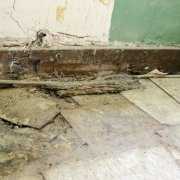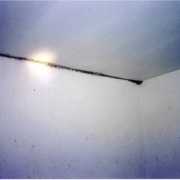California Fire Districts Sort Out Mold Problems Just Before Fire Season
San Diego, CA – Firefighters in three rural North County fire districts have moved out of mold-infested stations. Officials in one district blame the infectious fungi caused a ‘rash of respiratory problems.’ Valley Center Fire Chief Kevin O’Leary said about 55 employees may have been exposed to potentially harmful levels of mold at the Lilac Road station. “Three workers,” he said, “have some symptoms that may be related to mold, including chronic coughing.”
A Deer Springs fire station and another in Ramona have had mold problems as well, forcing those departments to house firefighters in temporary structures until the facilities are replaced. All three stations are manned by the California Department of Forestry and Fire Protection under contract with the area fire districts. The districts own and maintain the stations.
The Valley Center station, built by volunteers in the early 1980’s, is the only permanent wood-framed structure among the three. A mold inspection revealed high levels of several fungi, including some that cause health problems, according to state health officials.
“Killing the mold, repairing the leaks and water damage, and renting a trailer for firefighters is expected to cost about $100,000,” O’Leary said. The district is using budget reserves to pay for the work, the chief said. “Fortunately, our board of directors has contingency money for just such disasters,” he said. “But we’ve slowly had to use that money to cover normal operating expenses.”
Everything from fire apparatus to air vents had to be decontaminated before it could be used. The fire district office, which is attached to the station, was closed while the mess was cleaned up. It reopened Monday.
“The severity of the problem became apparent shortly after workers replaced the station’s roof, which had been damaged during the winter. Water had leaked beneath the outer shell of the roof and saturated the walls from within, meaning much of the damage was hidden from view,” O’Leary said.
In Ramona, firefighters abandoned their aging quarters at Dye Road and state Route 67 for a temporary structure about three years ago. “A new station is being planned and could be completed in about a year if all goes well,” said Tom Brammell, general manager of the Ramona Municipal Water District, which provides fire services in the area.
Deer Springs firefighters abandoned their fire station/mobile home about two months ago. Water had collected beneath the unit and leaked inside, causing excessive mold and water damage, Deer Springs Fire Chief Rich Bolton said.
“The district received a new double-wide mobile home Tuesday and is expected to move into the unit in coming weeks. The new station, which houses three firefighters and one engine, will cost about $150,000,” Bolton said.
Toxic mold is generally worse in newer, well-sealed buildings and in moist, dark areas, the state report says. Most airborne molds found indoors are saprotropic, meaning they feed on dead, moist organic matter, including wood, paper, paint, fabric, plant soil, dust and food.
The effects of mold on people vary depending on their physical condition, the types and amounts of fungi they encounter, and the duration of the exposure.
The health risks related to excessive mold exposure led California lawmakers to pass the Toxic Mold Protection Act in 2002. The law requires written disclosure of the presence and location of any existing mold infestation to prospective tenants or buyers of commercial or residential property. Unfortunately, there are no federal laws to protect the health of consumers against this national health crisis.

 The Meridian Start
The Meridian Start 






